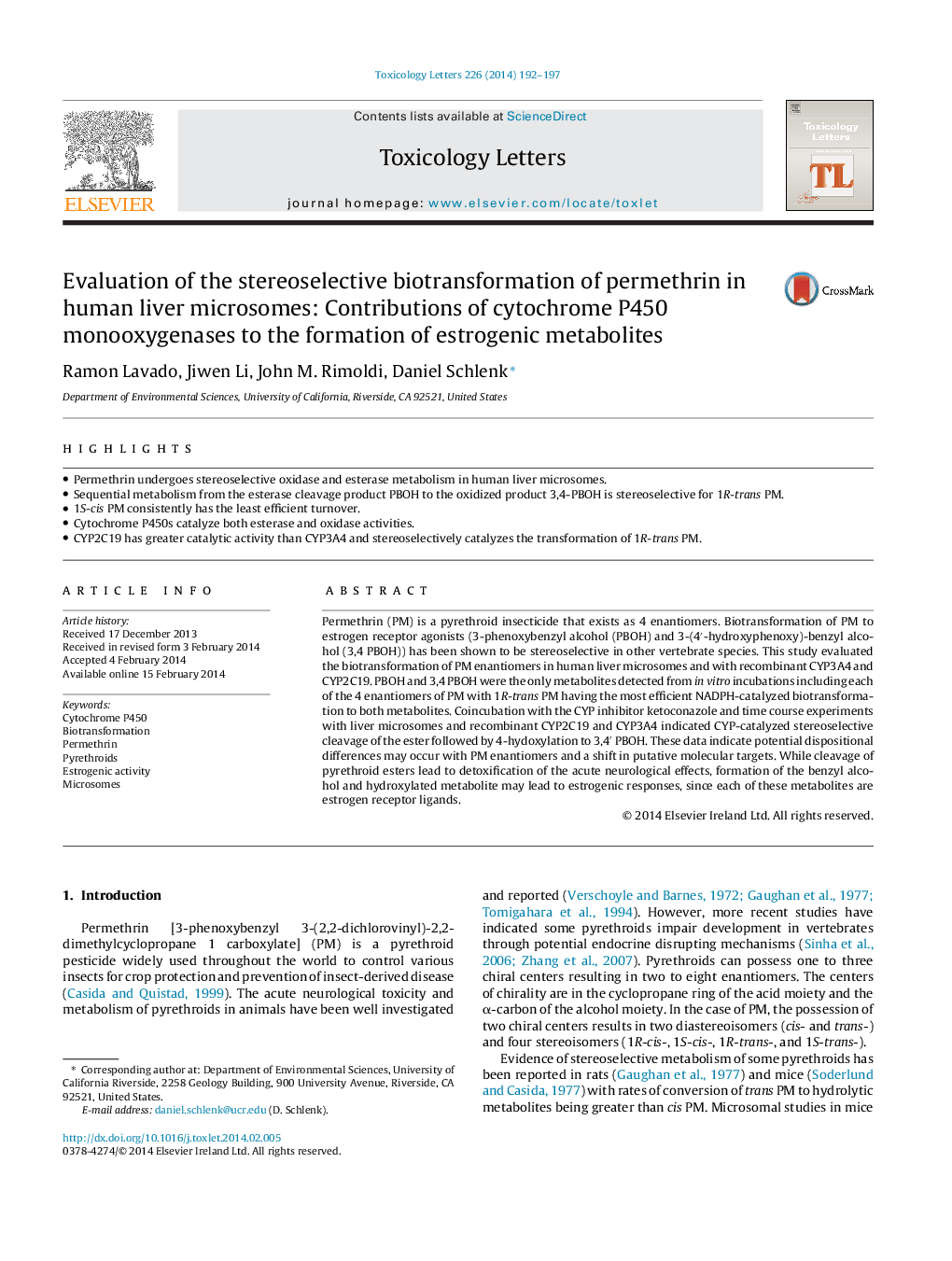| Article ID | Journal | Published Year | Pages | File Type |
|---|---|---|---|---|
| 5860352 | Toxicology Letters | 2014 | 6 Pages |
Abstract
Permethrin (PM) is a pyrethroid insecticide that exists as 4 enantiomers. Biotransformation of PM to estrogen receptor agonists (3-phenoxybenzyl alcohol (PBOH) and 3-(4â²-hydroxyphenoxy)-benzyl alcohol (3,4 PBOH)) has been shown to be stereoselective in other vertebrate species. This study evaluated the biotransformation of PM enantiomers in human liver microsomes and with recombinant CYP3A4 and CYP2C19. PBOH and 3,4 PBOH were the only metabolites detected from in vitro incubations including each of the 4 enantiomers of PM with 1R-trans PM having the most efficient NADPH-catalyzed biotransformation to both metabolites. Coincubation with the CYP inhibitor ketoconazole and time course experiments with liver microsomes and recombinant CYP2C19 and CYP3A4 indicated CYP-catalyzed stereoselective cleavage of the ester followed by 4-hydoxylation to 3,4â² PBOH. These data indicate potential dispositional differences may occur with PM enantiomers and a shift in putative molecular targets. While cleavage of pyrethroid esters lead to detoxification of the acute neurological effects, formation of the benzyl alcohol and hydroxylated metabolite may lead to estrogenic responses, since each of these metabolites are estrogen receptor ligands.
Related Topics
Life Sciences
Environmental Science
Health, Toxicology and Mutagenesis
Authors
Ramon Lavado, Jiwen Li, John M. Rimoldi, Daniel Schlenk,
